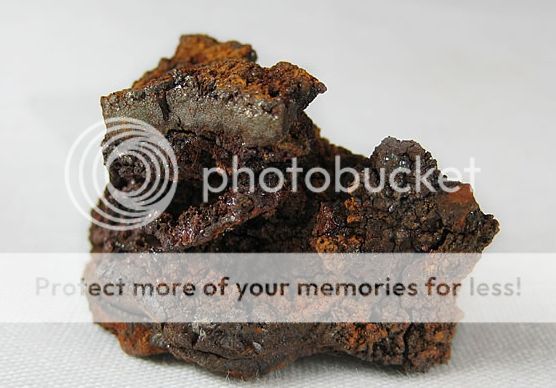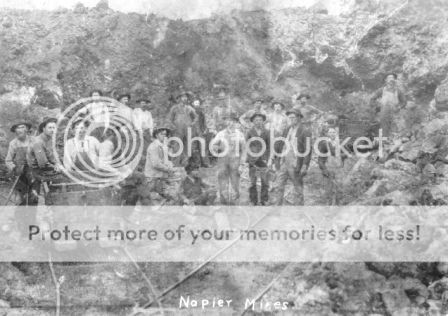NATR - Napier Mine EarthCache
-
Difficulty:
-

-
Terrain:
-

Size:  (other)
(other)
Please note Use of geocaching.com services is subject to the terms and conditions
in our disclaimer.
The Natchez Trace Parkway is a 444-mile drive through exceptional scenery and 10,000 years of North American history. Used by American Indians, "Kaintucks," settlers, and future presidents, the Old Trace played an important role in American history. Today, visitors can enjoy not only a scenic drive but also hiking, biking, horseback riding, and camping. For more information about the Natchez Trace Parkway visit:
Website: www.nps.gov/natr
Facebook: www.facebook.com/NatchezTraceParkwayNPS
Phone: 1-800-305-7417.
Please remember that collecting is NOT allowed in National Parks
The posted coordinates will take you to the parking area for the overlook platform of Napier Mines.

Napier Mine was an open pit mine which provided most of the ore for the nearby iron making operations. John Catron, circa 1786 to 1865 was a principal promoter of the activities here in the 1820s and 1830s. Catron later became the Associate Justice of the United States Supreme Court. The mine took its name from Catron's predecessors, the Napiers.
The Napier Mine is located in the southeastern part of Lewis County, Tennessee. The iron ore is situated in the high ridges above the Buffalo River, parts of which are nine hundred feet above sea level. The hardworking miners produced a high-quality limonite used to manufacture pig iron at the Buffalo Iron Works. The desirable material was dug by hand with pick and shovel and transported to the furnace in wagons until after the Civil War. A railroad spur of the Louisville and Nashville Railroad reached the industrial facility in the early twentieth century, when output was more than one hundred tons of pig iron per day. The World War I years proved to be the last period of prosperity for the Napier Iron Works, and the furnace went out of blast in 1923.

Limonite is not a true mineral but a mixture of similar hydrated iron oxide minerals. Most of limonite is made up of Goethite. Massive Goethite and Limonite can be indistinguishable. Limonite forms mostly in or near oxidized iron and other metal ore deposits, and as sedimentary beds. Limonite has been known to pseudomorph other minerals such as pyrite, meaning it replaces a crystal of pyrite with limonite but keeps the shape of the pyrite crystal.
The name limonite properly should be restricted to impure hydrated iron oxide (with variable water content) that is colloidal, or amorphous, in character. Often brown and earthy, it is formed by alteration of other iron minerals, such as the hydration of hematite or the oxidation and hydration of siderite or pyrite. It probably bears the same relationship to iron oxides that wad and gummite do to manganese and uranium oxides.
Pig iron is the intermediate product of smelting iron ore with a high-carbon fuel such as coke, usually with limestone as a flux. Charcoal and anthracite have also been used as fuel. Pig iron has a very high carbon content, typically 3.5 - 4.5%, which makes it very brittle and not useful directly as a material except for limited applications.

To get credit for the find, simply answer the following five questions and send them to me in a message (THE INFORMATION YOU NEED IS NOT ON THE "MISSING" INFORMATION SIGN):
Question #1: What is the carbon content in pig iron?
Question #2: From the viewing platform, what would be your best estimate of the deepest depth of this iron pit?
Question #3: What evidence do you see that proves that iron ore still remains at this iron ore pit? There are two obvious answers.
Question #4: How was the iron ore from this location first transported to the iron furnaces?
Question #5: Most of limonite is made up of what?
Once you have sent the answers to the five questions in a message, please post a photograph of yourself at the viewing platform with the iron ore pit behind you. The photograph is NOT required.

National Park Service
britannica.com
Center for Historic Preservation
geology.com
Additional Hints
(No hints available.)